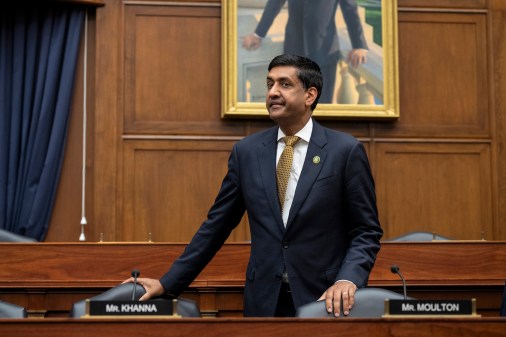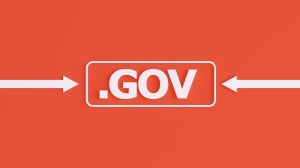Government Bytes: Moving into the technological future
It’s no longer difficult to imagine a world where citizens interact with government at their own convenience — using smartphones, tablets and computers. Where a courtroom date to pay a traffic fine can be conducted via webcam from the comfort of your own home. A world where passports are embedded with advanced biometric technology.
Today’s citizens are accustomed to using their phones for a range of activities, and technology is fundamentally changing the way organizations interact with individuals, employees and stakeholders. Not surprisingly, constituents expect — and would welcome — the same level of digital engagement from government. Three out of four citizens indicate that digital services would have a positive impact on their interactions with government agencies and officials, according to a recent Accenture study, “Delivering on digital government for government efficiency.”
Unfortunately, more than three years after the Obama administration unveiled its roadmap for a Digital Government, federal, state and local agencies are only just beginning to realize the benefits of adopting these technologies.
What can be done to accelerate government’s transition to the digital age?
The Trailblazers
Not all government agencies are late to the proverbial technology party.
Seattle is benefitting from the 2014 debut of the city’s “Find It, Fix It” app, which allows citizens to alert the city to potholes, graffiti or abandoned vehicles, which has expedited staff response time.
New York City has similarly seen improved efficiency from 311 — a service that allows residents to access government information and nonemergency services with just a click, text or call.
Even certain branches of the federal government are finding better ways to help the public, such as the Department of Veterans Affairs’ PTSD Coach application, which helps veterans manage symptoms of physical and psychological trauma.
Perhaps the most game-changing aspect of the PTSD Coach mobile application is that it is just a touch-screen tap away – 24/7 – for veterans in need. That the mobile application has been downloaded over 100,000 times in 74 countries around the world proves that citizens respond well to digital government services.
Unfortunately, PTSD Coach is an anomaly. Less than one-fourth of government agencies use digital tools like mobile applications to communicate with or provide services to citizens, according to a recent Accenture and Government Business Council survey.
Barriers to deploying digital tools and services.
It’s not that federal employees don’t recognize the benefits of technology. According to that same survey, more than half of federal employees believe that digital tools lead to increased workplace productivity and make it easier to provide services to citizens.
So why the institutional reluctance to embrace digital on a broader scale?
Accenture’s data reveals several major barriers to digital rollout, including concerns over limited budget, security and privacy, technical infrastructure, and coordination across organizations. Other potential obstacles include cultural resistance, lack of leadership buy-in, and lack of technical skill.
Getting government IT executives on board
It’s important to keep in mind that in a budget-strapped environment, federal agencies typically lock in on upfront costs out of necessity.
But with digital service delivery, there is an opportunity to assess the benefit annuity over time in terms of customer service improvement and ongoing cost reduction. If the break-even point has a short enough horizon, the business case is strong. Sometimes it is about spending some money now to start realizing immediate benefits — recognizing that the full benefits will be ultimately delivered incrementally over time.
As the generation raised on digital grows up, digital is going to be a “must-have” not a “nice-to-have” for citizens to access government services. Some would argue that for many citizens who actively use digital channels in their daily lives today, the pendulum is already swinging this way.
What is clear is that demographic shifts mean that digital services will pay off over time — sooner than many federal agencies may think.
To get more capabilities faster for less money, and to realize government efficiency sooner, federal agencies must start thinking differently about digital. Where to start:
- Develop the platform. Success demands that agencies have an IT foundation that enables agile delivery capabilities so that they can quickly deliver releases often using modern lightweight architectures.
- Connect with customers. Agencies need to develop an effective, “outside-in” customer feedback strategy to reliably receive, process and act on customer insight.
- Align with the mission. Agencies must plan digital services with a mission focus to deflect the highest-cost interactions while driving increased customer satisfaction.
As they do these things, federal managers can put digital services to work — for their agencies, their budgets and for citizens.
Recruiting and training is essential
Fostering a more tech-friendly environment within a federal agency is also key. So is prioritizing the recruitment of technologically savvy staff, who can find innovative digital solutions to technical problems and ease the transition for colleagues who must still keep legacy systems running.
Providing training opportunities for employees who feel they don’t have sufficient technical and management know-how is also critical. More than 40 percent of government employees voiced the need for staff with skills in project management, creative design, analytics and data management, and digital strategy development.
Of course, it’s hard to initiate real change without securing the support of senior officials, and a lack of leadership support presents a major obstacle to expanding digital engagement on a federal level.
Notably, half of government executives who participated in Accenture’s survey ranked their agency as good or excellent at using digital tools for customer service and engagement. This suggests a disparity between how senior leadership and junior staff perceive the level of digital engagement with citizens.
Making digital government a reality
Digitalization is also crucial for economic growth and competition. A digitally enabled government could reduce administrative overhead by up to 45 percent.
Looking more broadly, a 1 percent increase in digitalization could mean a 0.5 percent gain in gross domestic product and a 1.9 percent gain in international trade. In 2011 alone, digitization added $193 billion to world economic output and created 6 million jobs globally, according to the Accenture report, Digital at Depth: Digital Technologies at the Heart of Public Service Transformation.
There are several initiatives that government IT executives can initiate for knocking down barriers to improve digital collaboration and service delivery. These include:
Make digital the default: Though agencies have already made progress in incorporating digital tools for collaboration and customer service delivery for government efficiency, many have yet to fully diversify the ways in which employees and external customers can engage, interact or use digital services. Doing so can help make digital the “new normal” and accelerate the shift away from older, less efficient methods.
Invest in the right skills: Digital delivery requires technology and skills strengths to plan, build and execute new digital initiatives. The White House’s U.S. Digital Services Playbook released in August 2014 offers specific suggestions on the skills and capabilities that agencies should look for when recruiting or seeking external assistance in filling skills deficits, several of which were indicated by survey respondents. Seeking and applying the experience of seasoned digital experts can help federal agencies more efficiently provide digital services to customers.
Set clear strategic goals: While budget, security and privacy concerns hamper digital implementation, agency leadership can start to overcome these obstacles by articulating a clear vision for digital services. This includes not only specific goals and deadlines, but also, a variety of metrics that will allow decision makers to evaluate the effectiveness of the services and continuously improve development and delivery processes.
Chris Zinner is managing director for digital government at Accenture Federal Services.






